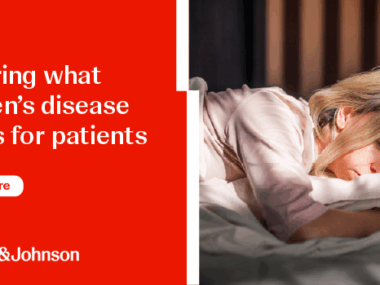Sjogren’s Patients Report Better Quality of Life Than Those With Sicca Unrelated to Disorder
Written by |
People with primary Sjögren’s syndrome have poor overall and oral health-related quality of life compared to healthy people, but these measures appear to be even worse among those with dryness symptoms (sicca) not related to the disorder, a study has found.
The findings suggest that people with non-Sjögren’s sicca, who experience less severe symptoms, have more trouble coping and should receive appropriate care and attention.
The study, “Patients with non-Sjögren’s sicca report poorer general and oral health-related quality of life than patients with Sjögren’s syndrome: a cross-sectional study,” was published in the journal Scientific Reports.
Sjögren’s is an autoimmune condition where the immune system attacks and damages secreting glands, leading to symptoms of dryness, most commonly in the eyes and mouth. But these sicca symptoms can also be seen in people without the disease or in the absence of medications that cause dryness.
These patients, generally known as non-Sjögren’s sicca patients, lack characteristic features of Sjögren’s, such as Ro/SSA and La/SSB autoantibodies and immune cells infiltrating salivary glands.
Sjögren’s syndrome is known to have a significant negative effect on quality of life. Yet, few studies have assessed the quality of life in non-Sjögren’s syndrome patients with sicca.
Therefore, a group of Norwegian researchers set out to investigate and compare the general and oral health-related quality of life in non-Sjögren’s sicca patients to those with primary Sjögren’s and healthy controls.
Their analysis included 60 women, ages 30 to 80, with primary Sjögren’s syndrome, along with 22 non-Sjögren’s sicca patients, and 43 healthy controls who had been matched to the Sjögren’s patients by age and sex.
The researchers used two questionnaires to evaluate health-related quality of life: the 36-Item short form health survey for general quality of life and the Oral Health impact profile-14 for the impact of oral symptoms on quality of life.
Additionally, each participant was examined for oral symptoms using the Summated Xerostomia Inventory-Dutch version (SXI-D) and the Clinical Oral Dryness Score (CODS). In both cases, higher scores indicate more severe oral dryness.
Eye symptoms were evaluated using the Ocular Surface Disease Index (OSDI), a 12-item questionnaire where higher scores also represent greater disability due to eye symptoms.
While people with non-Sjögren’s sicca had better oral health, fewer infections by the Candida fungus, better CODS scores, and higher secretion of saliva compared to Sjögren’s patients, they reported higher scores in the SXI-D questionnaire, “indicating a more pronounced subjective feeling of oral dryness,” the researchers said.
Similarly, these patients had less severe damage in their eyes and higher tear production, yet reported higher subjective feeling of dry eyes in the OSDI test.
Both Sjögren’s and non-Sjögren’s sicca participants had significantly lower quality of life compared with the healthy controls. But the non-Sjögren’s group reported more limitations in routine activities because of physical health problems, less vitality, and poorer general health. Mental health was similar for both groups.
The oral health survey also demonstrated worse oral quality of life for these patients (mean score of 18.6), compared to both Sjögren’s patients (13.5) and healthy people (2.2).
When researchers combined clinical data and survey scores, they observed that for Sjögren’s patients, oral health-related quality of life correlated with Candida infection and the severity of oral dryness. For non-Sjögren’s sicca participants, the researchers found no associations between clinical presentation and quality of life domains.
Overall, “although the pSS [primary Sjögren’s syndrome] patients had more prominent clinical features of oral and ocular dryness, reduced saliva secretion, and reduced tear production, they reported having a better quality of life than the non-SS sicca group,” the researchers wrote.
“Thus, it appears that the pSS group is coping better with the disease in the physical, social, and emotional aspects of daily life than the non-SS group,” they said, adding that “patients with non-SS may suffer as much, or even more, than patients with a pSS diagnosis.”
“Clinicians should be aware of this fact and provide appropriate care and attention for these patients, with frequent follow-ups and examinations in spite of them not fulfilling the [consensus Sjögren’s Syndrome] classification criteria,” they said.





